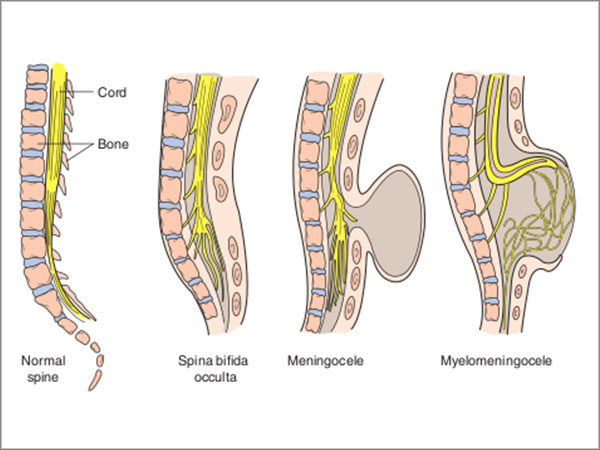
What is it?
Spina bifida is a birth defect that occurs when the spine and spinal cord don’t form properly. It is also called neural tube defect. The neural tube is the precursor for the child’s brain and spinal cord. In spina bifida a part of the neural tube fails to develop and this leads to defects in the spinal cord and spine. Spina bifida can range from mild to severe, depending on the type of the defect, size and location.
What are the causes?
The exact cause is not known. It appears to be due to a combination of genetic and environmental factors.
What are the risk factors?
- Folic acid deficiency
- Family history of neural tube defects
- Anti seizure medications like sodium valproate
- Poor control of diabetes
- Obesity and increased body temperature during pregnancy
Types of Spina bifida
Spina bifida can occur in different forms. The severity depends on the type, size and location.
- Spina bifida occulta: it is the mildest form of spina bifida. Here there is a small gap in one or more bones. Many people who have this condition don’t even know about it. It is picked up only in imaging for an unrelated reason.
- Meningocele: here the membranes around the spinal cord protrude out through the gap in the vertebrae. This presents as a fluid filled sac at birth in the back. There will be no neural tissue and the nerve damage is unlikely.
- Meningomyelocele: this is the severest form, with the spinal cord open along with the vertebrae in the back. The spinal cord and the nerves are in the sac and the baby will be prone to life threatening complications.
What are the symptoms?
- Spina bifida occulta: no signs and symptoms, but sometimes abnormal tuft of hair or a visible dimple or birthmark may be seen on the skin over the defect.
- Meningocele: a fluid filled sac over the back. No neural tissue in the sac.
- Myelomeningocele:
- Open spinal cord
- Nerves seen in the sac
- Sometimes neural tissue is exposed.
Diagnosis:
During pregnancy:
- Maternal serum alpha fetoprotein test: abnormally high level of alpha fetoprotein in the serum suggests a likely hood of neural tube defect
- Abdominal ultrasound scan to see for features of neural tube defects
- Amniocentesis: drawing fluid from the sac around the baby in the womb and to estimate the AFP levels. High levels suggest a neural tube defect.
 |
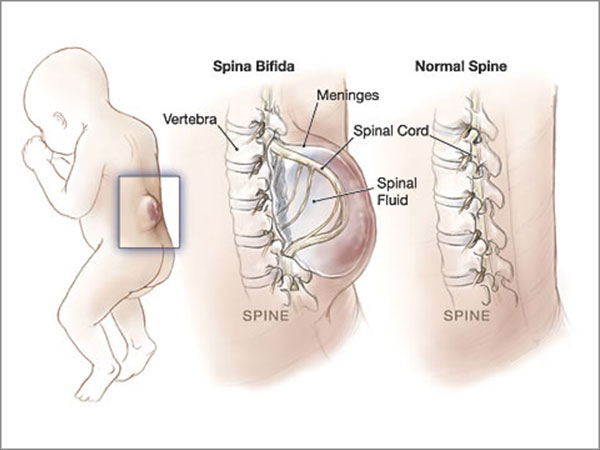 |
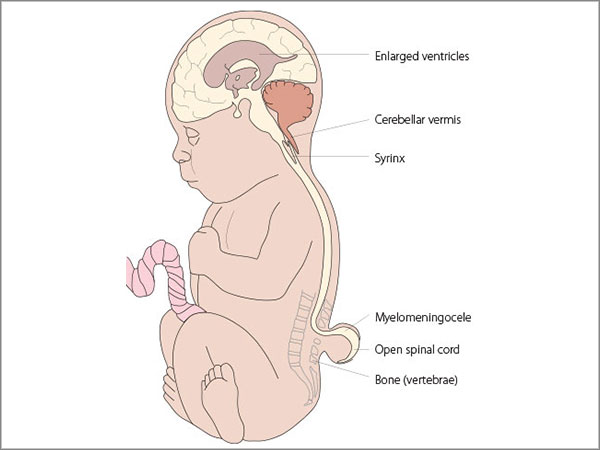 |
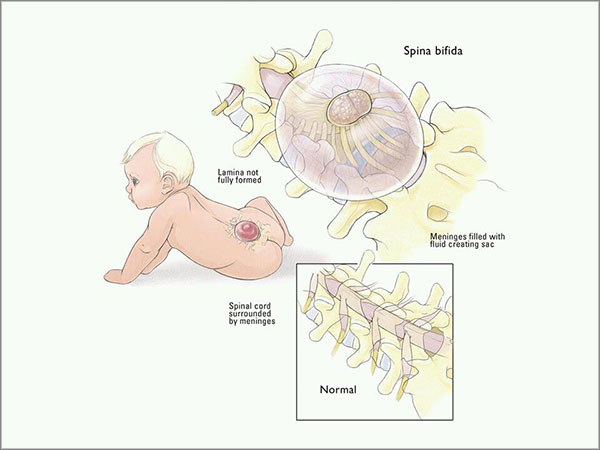 |
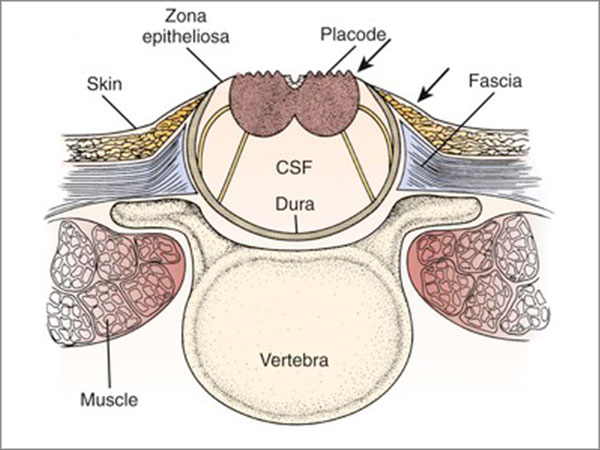 |
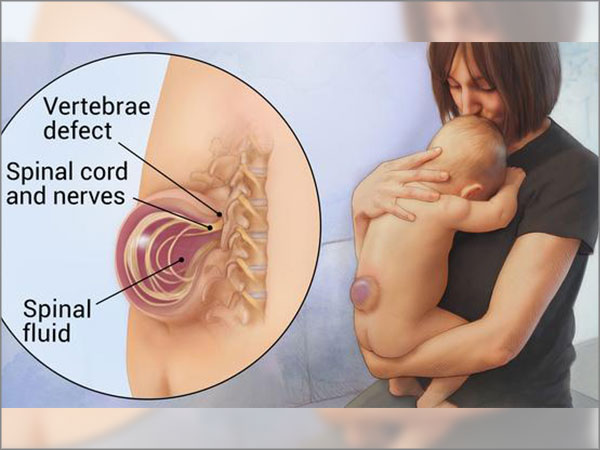 |
Problems with spina bifida
Depends on the severity of the defect
- Walking problems due to muscle weakness and sometimes paralysis
- Orthopedic problems like scoliosis, dislocation of hip and contractures due to muscle weakness
- Bowel and bladder problems due to damage to concerned nerves
- Hydrocephalus and chiari malformations are associated disorders
- Infection in exposed neural tissue – meningitis
- Tethered cord where spinal cord gets stuck to the scar following surgery
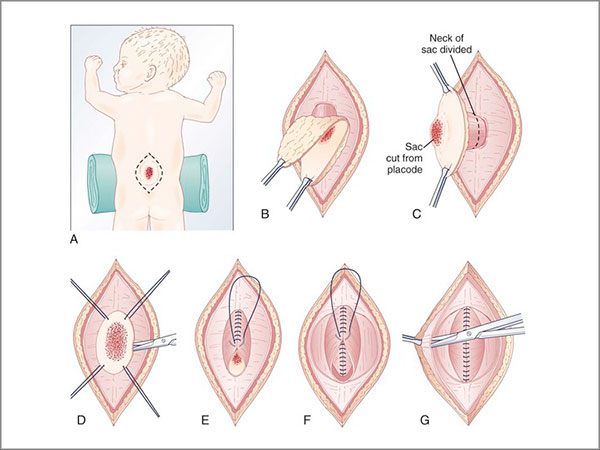
Treatment:
- Surgical treatment is the only option
- Surgery before birth called fetal surgery. It is done on the baby in the mothers’ womb. It has better prognosis.
- Surgery after birth: closure of the defect preserving all the exposed neural tissue


